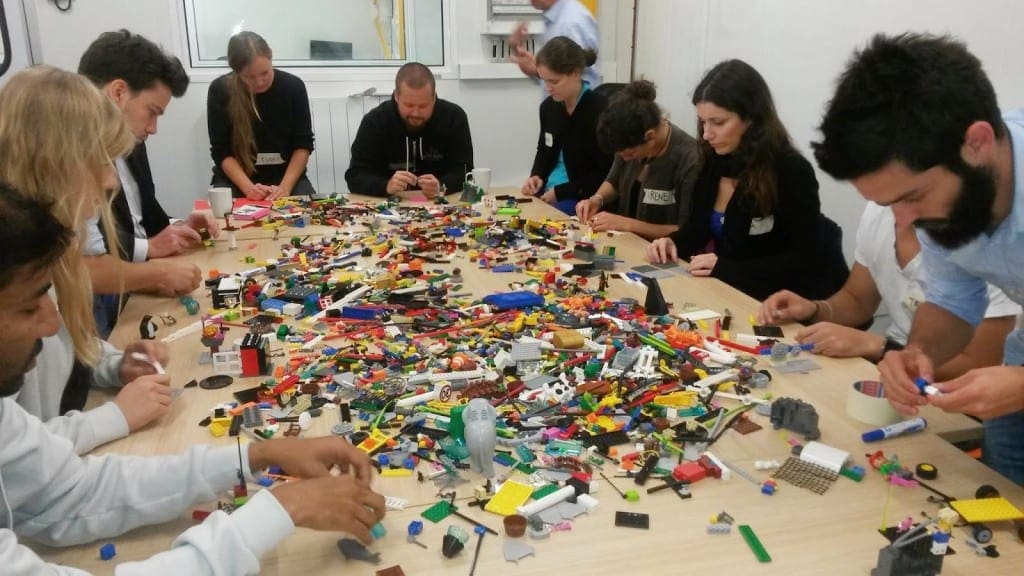To truly excel in a digital business, your internal Team must be present, participating, and truly engaged. This important component of your Great Digital Business will be a big differentiator.
So far, we have talked about the “obviously” Digital components of your Great Digital Business – systems and processes that support internal Operations, bring us closer to our Customers, and change the nature of our Products. We also talked about that critical connective tissue – Data – and the skills required to extract information to create real value. Critical components, yes, but what’s the one thing that’s missing – the one thing that makes this all work?
It may be a surprise, but the answer is decidedly non-digital; it’s all about people. Specifically – your employees, the Teams that execute your internal processes, connect with your customers and distributors, and build & service your product offering. To truly excel in a digital business, your internal Team must be present, participating, and truly engaged.
Note, however, that simply declaring a “digital transformation” will not address current challenges. Think about it; if you currently struggle with siloed information, closely held by your operations, marketing, and engineering teams – why would those walls automatically come tumbling down? They were built by people, and people are still in these organizational structures – why would we expect that “declaring ourselves digital” will change the status quo?
On the other hand, your employees may be ahead of you – and waiting patiently for the signal to change. Has your team makeup shifted in the past few years? You may be building up a team of “digital natives”, folks that are expecting to work with business information in a different way – in much the same way as they immerse themselves in a digital world in their personal lives.
The Mix is Changing
Time marches on, and the mix of employees in different generational cohorts is always changing. I like to point to this study by Pew Research, looking at Millennials, Gen Xers, and Baby Boomers in the workforce. Each of these generations is roughly 1/3 of your workforce – but 2015 was the first year that Millennials became the largest third.
There are important differences in the way these groups “think digitally” – for example, Baby Boomers are quite comfortable communicating with email, and have developed years of important manners and customs that are expected of people that are “good communicators”. Millennials, on the other hand, prefer different tools and methods to make their connections – with different styles, expectations, and implicit assumptions. Neither camp is incorrect; communication in any media is a nuanced and changing thing. But as the overall mix changes, your team is clearly shifting to a more digitally savvy and assumptive population.
This growing group of workers also thinks differently about the kind of company they prefer to work for. Much is being written about Employee Engagement, the idea that the degree to which employees are engaged (i.e. they understand the company’s role and vision, get the support they need from their managers, and have the required resources to succeed in their job) is very important to them – and directly related to the success of the business.
Of course, it doesn’t take much effort to find contrary opinions. I don’t agree with 100% of the pro-Engagement arguments, but I know that Employee Engagement is real and quite valuable; I like to understand my company’s mission, I value feedback from my boss, and I push for the right resources to get my job done well. It just makes sense that I would want the same for the people I work with.
Link to Digital Business
Simply put, a “digital business” cannot succeed unless it knows how to connect with people – and your employees are the people that will do the connecting! You can (must!) dig a little deeper here – and focus on building and leading great Teams, that can drive ideas around human factors engineering and design thinking.
As we have noted before, all components of our digital strategy are sharing energy with each other – and our Teams are no different. There truly are ways to measure and manage something as “grey” as Employee Engagement, with meaningful metrics that focus on the intent of the program. Design Thinking is one of many challenging skill sets that have to be shared across the different teams – not just with the creatives in Marketing or the product designers in Engineering. Everyone needs to understand this new way of thinking.
Pay attention to Teams – engaged, focused Teams – and how they incorporate into your Great Digital Business. The manner in which you build and grow Teams, that can survive and thrive in a fast changing digital environment, is going to be the very non-technical, analog differentiator between organizations whose digital strategies drive the business forward, and those that fall to the wayside.
25 June, 2017
- The Five Core Components of a Great Digital Business
- Digital Business and Internal Operations: Treasure in the Foundation
- Digital Business and Customer Relationships: Big Value in Tight Connections
- Digital Business and Products: Changing the Game in a Big Way
- Digital Business and Data: The Critical Connective Tissue
- Digital Business and Your Team: Talent and Engagement







This Post Has 0 Comments